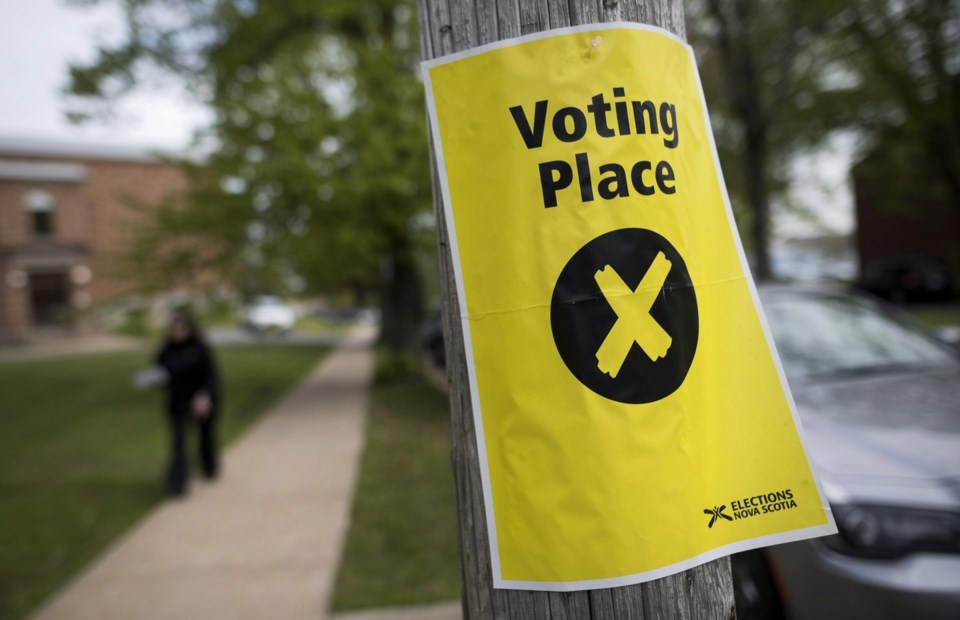HALIFAX — Voter turnout in last fall’s Nova Scotia election reached a historic low, continuing a downward trend led by the province's youngest group of voters.
New statistics released this week from Elections Nova Scotia confirm overall voter turnout for the Nov. 26 election dropped to a record-setting 44.9 per cent. And a breakdown of the results showed a significant gap between the youngest and oldest voters.
In the two youngest cohorts, only 16.6 per cent of voters between the ages of 18 and 24 cast a ballot, while just 23.8 per cent of those between 25 and 34 voted.
The highest turnout was among voters 75 and older at 66.6 per cent, followed by the 65-74 age group at 63.9 per cent. No other demographic reached over 50 per cent, with the 55-64 cohort closest to that mark at 48.1 per cent.
Lori Turnbull, a political scientist at Dalhousie University in Halifax, said the numbers aren’t surprising.
“This is consistent with what you would see anywhere — older voters vote more and younger voters are the ones whose participation is less robust,” said Turnbull, chair of university's public and international affairs department.
If people don’t vote at an early age, the trend usually continues as they age, she said.
“Voting is habit forming,” Turnbull said. “When I see this gap at 25-34, these are the people who didn’t pick up the habit of voting over the last 15 years.”
Overall, Turnbull said the trends indicate that as older voters pass away, they aren’t being replaced by younger voters, which isn’t good for the health of any democracy.
In its report, Elections Nova Scotia said the province's voter turnout has been on a downward trend since the 1960s, with a brief increase in the late 80s and early 90s. The agency said it has yet to conduct any surveys to help explain why so many people choose not to vote.
“Declining voter turnout has been a trend in many Canadian jurisdictions," the report said, adding that similar voter turnout levels were reported in Ontario in 2022 and 2025.
Meanwhile, preliminary estimates from Elections Canada indicate more than 19.5 million Canadians cast a ballot in last month’s federal election. That's a voter turnout rate of 68.6 per cent.
While that's an increase when compared with the 2021 federal election, Turnbull believes the number should have been higher, given the public response to affordability issues and the political and economic turmoil caused by U.S. President Donald Trump.
“You would have thought, given the stakes, that it would have been up over 70 per cent,” she said, adding that many people believe voting will make no difference in their lives.
“I also think political parties are not necessarily making it a priority to reach out to younger voters,” Turnbull said.
However, she said it’s ultimately up to governments to do more to ensure people go to the polls from an early age.
“It can be civics classes and it could be a lower voting age or some kind of an approach to citizenship in a fuller sense, but we don’t see that here,” she said.
November’s election in Nova Scotia saw the Progressive Conservatives led by Premier Tim Houston win a second consecutive majority government. They won 43 of 55 seats, while the NDP won nine seats, the Liberals held two, and there is one Independent.
This report by The Canadian Press was first published May 9, 2025.
Keith Doucette, The Canadian Press


